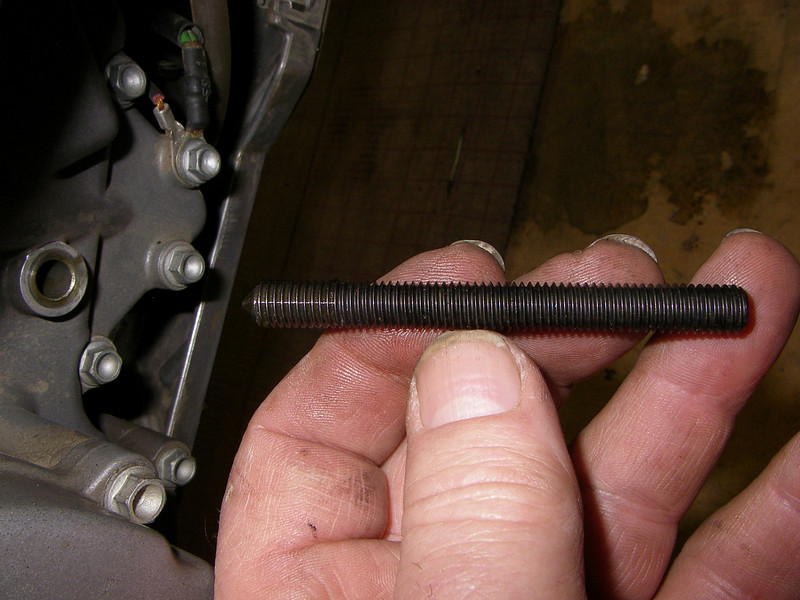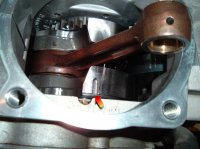hi there. i came back from a ride and had low coolant just below the fins(after only topping up a day before). so i decided to check if my gasket was blown and do a leak down test but this time decided to use the best method recommended by KTM, using the crank lock bolt to stop the engine from turning over during a leak down test(was my very 1st time using the crank lock bolt)...and worked a lot better.
anyway, i began by using my regular method of putting the bike in top gear the putting a balloon on the end of the leak down spark plug adaptor hose and rocked bike back and forward to find TDC(or near abouts) til the balloon blew up, then took out crank lock bolt, removed copper washer, then screwed in crank lock bolt without copper washer by hand til there was a little bit of resistance, then had a helper slowly/gently rock the bike back and forth til the crank lock bolt screwed in properly/all the way by hand.
did the leak down test and i got 11% leakage(on a cold engine which im ok with)..which is the same percentage i got last time.
however i just have a few questions. i did the test 2 times using the crank lock bolt. the 1st test showed 18% leakage(with crank lock bolt in) and the 2nd test showed the same reading as last time(11% leakage)...which is obviously the correct reading. so im guessing the 1st test i did, the piston wasn't at exactly true TDC and just a bit off even with the crank lock bolt in. The 2nd test i did, the bolt would not screw in anymore at all, so that 2nd test was definitely true TDC and the bolt all the way in by hand.
1st question is: during the 1st test, with piston probably not at correct true TDC even though the crank lock bolt was in(but maybe not exactly ALL the way), how come the bolt still went in relatively smoothly and the engine didn't turn over at all during leak down test??
2nd question is: by me having the bike moved back and forth slowly with the crank lock bolt in 98% of the way, that wouldn't of done much, if any damage would it??(usually your meant to turn the flywheel instead but i didn't want to disconnect any stator wires and thought this would be easier). it was only once and very gently.
Bike is a KTM RFS 2004 model for those wondering.
anyway, i began by using my regular method of putting the bike in top gear the putting a balloon on the end of the leak down spark plug adaptor hose and rocked bike back and forward to find TDC(or near abouts) til the balloon blew up, then took out crank lock bolt, removed copper washer, then screwed in crank lock bolt without copper washer by hand til there was a little bit of resistance, then had a helper slowly/gently rock the bike back and forth til the crank lock bolt screwed in properly/all the way by hand.
did the leak down test and i got 11% leakage(on a cold engine which im ok with)..which is the same percentage i got last time.
however i just have a few questions. i did the test 2 times using the crank lock bolt. the 1st test showed 18% leakage(with crank lock bolt in) and the 2nd test showed the same reading as last time(11% leakage)...which is obviously the correct reading. so im guessing the 1st test i did, the piston wasn't at exactly true TDC and just a bit off even with the crank lock bolt in. The 2nd test i did, the bolt would not screw in anymore at all, so that 2nd test was definitely true TDC and the bolt all the way in by hand.
1st question is: during the 1st test, with piston probably not at correct true TDC even though the crank lock bolt was in(but maybe not exactly ALL the way), how come the bolt still went in relatively smoothly and the engine didn't turn over at all during leak down test??
2nd question is: by me having the bike moved back and forth slowly with the crank lock bolt in 98% of the way, that wouldn't of done much, if any damage would it??(usually your meant to turn the flywheel instead but i didn't want to disconnect any stator wires and thought this would be easier). it was only once and very gently.
Bike is a KTM RFS 2004 model for those wondering.




